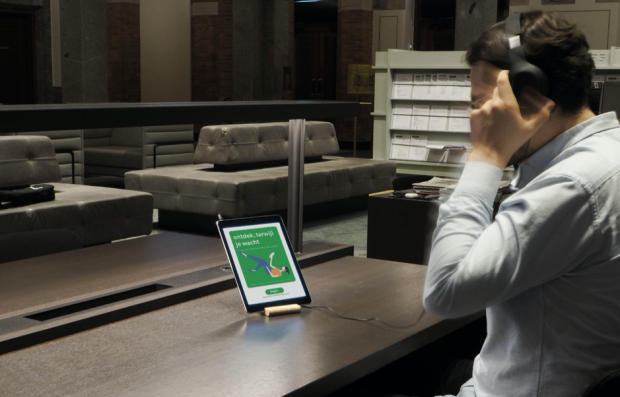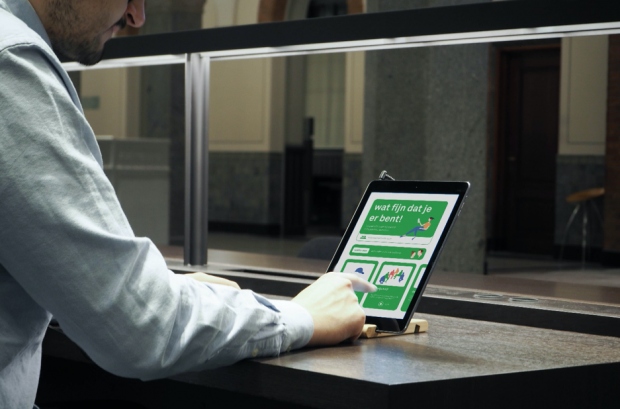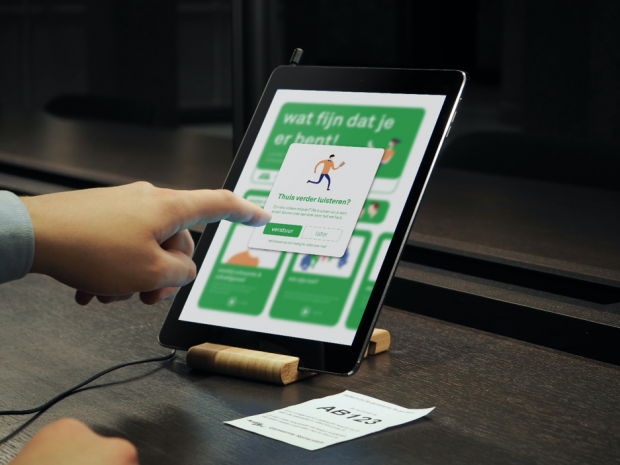By Koen van der Loop
Introduction
The municipal service center may be considered as the front desk of the municipality. In this physical location (figure 1) citizens can arrange products such as passports, driver’s licenses and other legal documents. In addition, they also provide support with legal issues, housing, finances and work-related issues.
These services provide one of the first interactions citizens have with their municipality, and their functioning shape people’s sense of trust in, and expectations of the municipality (Opengovpartnership, n.d.). Governments are constantly searching for service optimizations and despite efforts made by incorporating modern technologies this relationship between citizens and governmental bodies is not improving.
The Municipality of Rotterdam is looking for new possibilities that can positively impact citizens’ experience. This project explores how the municipality can enhance the well-being of citizens while they are receiving their services in the municipal service center.
Approach
This project was carried out in four phases. First, the conditions are explored that are held responsible that create wellbeing. Second, a two-phase research method (figure 2) measured people’s emotions, uncovered seven concern themes and created an understanding of the impact on people’s fundamental needs (Desmet & Fokkinga, 2018). Third, a frame is defined that determines which of the thirteen fundamental needs is used as a focal point to enhance well-being of citizens in the service center. Finally, a dilemma driven approach led to the creation of a concept for the service center.

Figure 1: Research method to uncover people’s concerns and measure its impact on well-being
User study
Activities make up 40% of our happiness level and are vital to our well-being. By investigating what people experience during these activities, possibilities will arise to enhance well-being. Analyzing people’s micro-emotions yielded 144 emotional events where two-third of the events were negative experiences and one-third were positive experiences. In addition, three situations were identified that caused these negative experiences.
Direction
An opportunity is found in enhancing citizens’ sense of belonging. Providing people a feeling that they are part of, and accepted by an entity that is important to them. It aims to bring municipality and citizens closer, make citizens feel valued and accepted, and let them experience that they matter. This led to narrow down the project goal to introduce a new activity that alter people’s mood by providing them a sense of social support.
Solution
With many concerns in the context, a dilemma driven approach was applied that juxtapositions people’s concerns to inspire ideation and pinpoint the moment to intervene. The story-table (figure 3) was created that introduces a positive moment while people are in the municipal service center. The intervention keeps track of people’s appointments, and meanwhile people can listen to stories with a headphone that stimulates a sense of connectedness.

Figure 2: Citizens can discover interesting stories while they wait
The stories play a crucial role in the experience because over history, in every culture, stories are used to bring people together, shape people’s identity and their sense of belonging. The intervention contains stories (figure 4) that touch upon people’s world of experiences and feelings. These stories are presented in audio because it is more intimate than watching video or reading text, hence empathizing a sense of connectedness.

Figure 3: Users choosing stories that shed a positive light on personal and context-relevant situations
The intervention facilitates users to join-in a story with others to create a shared listening experience. And perhaps some small light-hearted meetings will happen (figure 5). The intervention also provides citizens with an option to take the story home (figure 6) to re-listen or prolong their experience.

Figure 4: Users in a shared listening experience

Figure 5: Taking the story home
Results
The project is about creating a positive moment that can alter people’s mood in the service center. Evaluation shows that people exclusively experienced positive emotions. Experiencing positive emotions is one of the ingredients that adds up to our well-being. Furthermore, evaluation shows that people experience the concept as positively surprising, insightful and elevating.
“The stories give me hope to know that other people also feeling this way” – Woman, 21yrs
It allowed people to feel connected with others on a more experience and emotional level where they reflect on their own experiences and concluding that no matter how bad the struggle, they are not alone in their situation.
“It is really good that these stories are being told by the municipality” – Man, 55yrs
People could also relate to the municipality more on a value-level. And having shared values with others is one of the key conditions to experience a sense of belonging (Vogl, 2016).
References
Desmet, P.M.A., & Fokkinga, S.f. (2018). Human Experience Catalog; five typologies of human experiences. Rotterdam: Emotion Studio. ISBN 978-94-6186-955-5
Public service delivery. (n.d.). Retrieved from https://www.opengovpartnership.org/theme/public-service-delivery
Vogl, C. (2016). The art of community: Seven principles for belonging. Berrett-Koehler Publishers.



